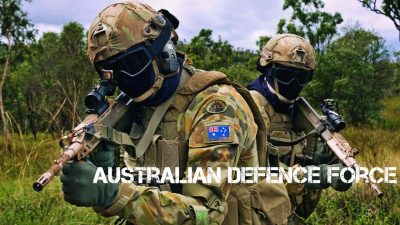Australia: Send in the Troops! Deploying the ADF Against Rioters

Such moves should trouble any constructive dissenter and civil libertarian: the vesting of powers in a military force to be used against domestic disturbances. While the United States has a troubled history with it, posse comitatus still remains something of a letter restricting the deployment of the US armed forces on the streets of the country’s cities. That doctrine has effectively seen an expansion of the FBI’s role to occupy what might have been seen in the past to be traditional military roles.
In Australia, no such reining in powers and impediments exist, though States have been hamstrung by the requirement of making a request to the Commonwealth to initiate military action in the event that their police forces lack the means to protect themselves or the Commonwealth’s interests.
This has left the prospect of enlarging the army’s role in civilian life disturbingly possible in times of perceived crisis. Utterings since the 2014 Lind Café hostage taking by Man Haron Monis, absurdly described as a “siege” by the counter-terror fraternity, combined with other foreign terrorist incidents that call out powers be broadened have become regular.

Last week, the Australian Attorney-General Christian Porter (image on the right), who occupies a position where this sort of thing shouldn’t happen, announced that members of the Australian Defence Force would be vested with “shoot to kill” powers to be used only in “reasonable and necessary” circumstances to protect life.
Porter’s arguments give the impression that such military operations will be governed by the protocols of good sense and reason, notwithstanding that the ADF is a killing rather than justice machine. Matters of evidence matter less than those of expediency.
“The use of force by the ADF in a battle situation off Australian soil in a war zone is somewhat different and this is a much higher and more stringent standard, and the same standard in effect the police have been operating under for many decades in our variety of jurisdictions.”
The ADF will also be given pre-authorised power to respond to threats on land, at sea and in the air, and given expanded powers to search, seize and control movement at the scenes featuring terrorist incidents. This power would also apply to quelling riots.
Porter also uses the creaky argument that changing security environments have warranted the move.
“The terror threat we face today,” he says tediously, “is greater and more complex than that we faced when these laws were introduced almost 20 years ago.”
Australian Federal Police Commissioner Andrew Colvin has felt besieged by a movement that can only be described as a militarisation of civil space. Pressed for comparisons between the effectual nature of a police operation against terrorism last year with its military analogue, Colvin made the following observation:
“Of course [the military] are in a better position to deal with some situations than us. But the concept that we aren’t trained or capable to deal with the domestic terrorism situations that we see, I think, needs to be challenged.”
Specific interest here is focused on Part IIIAAA of the Defence Act 1903, covering the “Utilisation of Defence Force to protect the Commonwealth Interests and States and Self-governing Territories.” Porter’s aim was to ensure “that law enforcement agencies around Australia can easily request ADF assistance to respond to these threats where necessary and are available to states and territories to assist with major incidents, such as geographically dispersed or otherwise widespread, coordinated acts of violence of other domestic incidents that threaten the security and lives of Australians.”
But critics of encouraging military deployments in local counter-terrorist situations have been sharp enough to note that the Lindt operation, which resulted in three deaths including the hostage taker was, in Allan Orr’s words,
“not the NSW Tactical Operations Unit (TOU), it was the competitive and jealous quarantining of tactical skills, resources and budget entitlements by the ADF that left the frontline TOU without the training and equipment it needed to do its job properly.”
Orr’s sensible appraisal has been put to one side by such individuals as Neil James of the Australia Defence Association, who takes the line of Australian exceptionalism and creativeness with the historical record.
“The whole concept of this goes back centuries back in the days when they didn’t have police forces and governments used to call on the military to do things that the police do now. All this is doing is putting in a statute was is a century-and-a-half of precedent.”
This blotching of the historical record ignores the fundamental wisdom of separating the functions of police and the functions of defending the realm in an industrial society. Muddling these merely serves to doom the security of citizens, rather than enhancing them. Such is the danger of amalgamating, rather than dispersing, forces.
As with matters affecting liberty, the bungling nature of proto-authoritarianism is what spares it. While the ADF might well have these new powers, police are still vested with the lion’s share of dealing with terrorism incidents. The powers in Canberra have also insisted that the military’s Tactical Assault Groups specialised in anti-terrorism activities can only be deployed nearer their bases in Sydney and Perth. Changing legislation, for all the aspiration of the drafters, does not necessarily change operational realities.
*
Dr. Binoy Kampmark was a Commonwealth Scholar at Selwyn College, Cambridge. He lectures at RMIT University, Melbourne. He is a frequent contributor to Global Research and Asia-Pacific Research. Email: [email protected]

